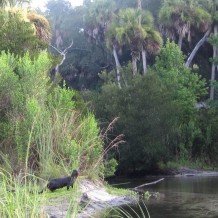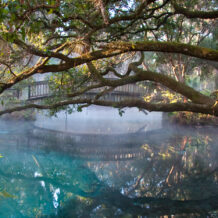caring for your spring
Juniper Springs
Caring for springs typically involves minimizing nutrient loads throughout the springshed. Topics for mitigation include lawns, spray fields, septic tanks and animal operations. But there are not many people living near the Juniper Springs. The predominant land use in the springshed is forestry so best management practices for forestry are important to the springshed.
Sanitary facilities at the National recreation area are a potential issue that should be monitored. Clearly sewage treatment facilities are needed to accommodate the thousands of users per year at Juniper Springs. Concerns are associated with the facilities proximity to the spring.
Juniper Prairie and any known sinkholes are areas that should be considered more vulnerable to pollutants or nutrients due to the efficiency of their percolation. Areas of efficient percolation should be identified and included in management plans.

One of the sometimes hidden impacts to springs that clearly applies to Juniper is our “loving them to death.” The sheer volume of users can multiply even slight impact into management issues. So be sure the next time you visit any of our parks or public outdoor facilities be sure to act with respect and care. We are borrowing these natural gems from future generations and we need to pay forward to them all that is due.
I give special credit here to those who paddle Juniper Creek. It is one of the least littered waterways I have seen. Thanks go to the policies that keep disposable containers off the run and to those that really, really care. Thanks.




